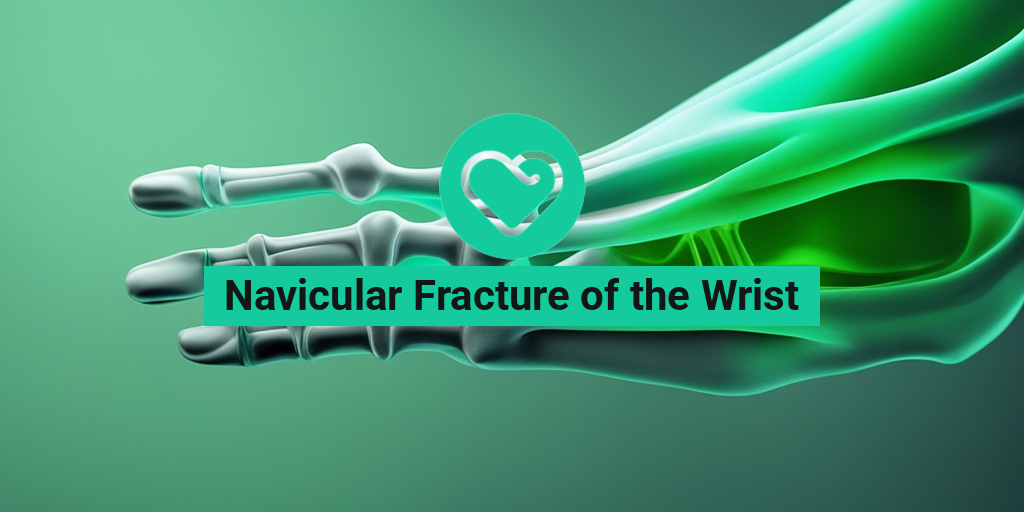What Is a Navicular Fracture of the Wrist?
A navicular fracture of the wrist, also known as a scaphoid fracture, is a type of wrist injury that occurs when the navicular bone in the wrist breaks or cracks. The navicular bone is a small, crescent-shaped bone located in the wrist, and it plays a crucial role in the movement and flexibility of the wrist joint.
The navicular bone is a common site for fractures, especially in young adults and athletes who participate in high-impact sports or activities. A navicular fracture can occur due to a fall onto an outstretched hand, a direct blow to the wrist, or a twisting injury.
Is There a Navicular Bone in the Wrist?
Yes, there is a navicular bone in the wrist! The navicular bone, also known as the scaphoid bone, is one of the eight small bones in the wrist. It is located on the thumb side of the wrist and connects the forearm bones (radius and ulna) to the hand bones (carpals). The navicular bone is a vital structure that helps to facilitate wrist movement and provides stability to the wrist joint.
Navicular Fracture Symptoms
If you’ve suffered a navicular fracture, you may experience a range of symptoms, including:
- Pain and tenderness in the wrist, especially on the thumb side
- Swelling and bruising around the wrist
- Difficulty moving the wrist or performing daily activities
- Weakened grip strength
- Numbness or tingling in the hand or fingers
In some cases, a navicular fracture may not cause immediate symptoms, and the injury may only become apparent after a few days or weeks. If you suspect that you’ve suffered a navicular fracture, it’s essential to seek medical attention promptly to prevent further complications.
At Yesil Health AI (yesilhealth.com), we understand the importance of accurate diagnosis and timely treatment for navicular fractures. Our evidence-based health resources can provide you with the information you need to make informed decisions about your care.
🤕 Stay tuned for the next part of this article, where we’ll dive deeper into the diagnosis and treatment of navicular fractures!

Causes and Risk Factors of Navicular Fracture
A navicular fracture of the wrist is a type of injury that occurs when the navicular bone in the wrist breaks or cracks. While it’s not a common injury, it can be painful and debilitating. But what causes this type of fracture, and who’s at risk? Let’s dive in and explore the causes and risk factors of a navicular fracture.
Falls and Trauma
One of the most common causes of a navicular fracture is a fall onto an outstretched hand. This type of fall can cause the navicular bone to break or crack, especially if the wrist is twisted or bent during the fall. Other types of trauma, such as a car accident or a sports injury, can also cause a navicular fracture.
Repetitive Strain
Repetitive strain or overuse can also contribute to a navicular fracture. This is especially true for athletes or individuals who participate in activities that involve repetitive wrist movements, such as gymnastics, tennis, or golf. The repeated strain on the wrist can cause the navicular bone to weaken and eventually break.
Weak Bones
Certain medical conditions, such as osteoporosis, can weaken the bones and increase the risk of a navicular fracture. This is especially true for older adults, who may have weaker bones due to age-related bone loss.
Genetic Predisposition
Some people may be more prone to a navicular fracture due to genetic factors. For example, individuals with a family history of bone fractures or osteoporosis may be more likely to experience a navicular fracture.
How Is a Navicular Fracture Diagnosed?
Diagnosing a navicular fracture typically involves a combination of physical examination, medical history, and imaging tests. Here’s what you can expect during the diagnosis process:
Physical Examination
During a physical examination, your doctor will typically check for tenderness, swelling, and limited mobility in the wrist. They may also perform a series of tests to assess wrist function and identify areas of pain.
Medical History
Your doctor will also ask about your medical history, including any previous injuries or conditions that may have contributed to the fracture.
Imaging Tests
Imaging tests, such as X-rays or a CT scan, are typically used to confirm the diagnosis of a navicular fracture. These tests can help your doctor visualize the bone and identify the extent of the fracture.
Wrist X-Ray
A wrist X-ray is usually the first imaging test used to diagnose a navicular fracture. This test can help identify the fracture and determine its severity.
CT Scan
In some cases, a CT scan may be used to get a more detailed image of the wrist and navicular bone. This test can help your doctor identify any additional injuries or complications.
By understanding the causes and risk factors of a navicular fracture, as well as the diagnosis process, you can take steps to prevent this type of injury and seek prompt medical attention if you experience symptoms. 💊

Treatment Options for Navicular Fracture
A navicular fracture of the wrist can be a painful and debilitating injury. Fortunately, with proper treatment, most people can recover fully and regain normal wrist function. The goal of treatment is to alleviate pain, promote healing, and restore wrist mobility and strength. In this article, we’ll explore the various treatment options for a navicular fracture of the wrist.
Non-Surgical Treatment for Navicular Fracture
In many cases, a navicular fracture can be treated without surgery. Non-surgical treatment is often the first line of treatment, especially for non-displaced or minimally displaced fractures.
Immobilization: The wrist is immobilized in a cast or splint to allow the bone to heal. This can last for 6-8 weeks, depending on the severity of the fracture.
Pain Management: Over-the-counter pain medications such as acetaminophen or ibuprofen can help alleviate pain and discomfort.
Ice and Elevation: Applying ice to the affected area can help reduce pain and swelling. Elevating the wrist above heart level can also help reduce swelling.
Physical Therapy: After the cast or splint is removed, physical therapy can help restore wrist mobility and strength.
In some cases, non-surgical treatment may not be enough to promote healing. If the fracture is displaced or the bone is not healing properly, surgery may be necessary.
🤕 Remember, it’s essential to follow your doctor’s instructions carefully and attend follow-up appointments to ensure the fracture is healing properly.
Note: The article will be continued with the surgical treatment options for navicular fracture of the wrist.

Surgical Treatment for Navicular Fracture
A navicular fracture of the wrist is a serious injury that requires prompt medical attention. In some cases, surgical treatment may be necessary to ensure proper healing and prevent long-term complications. So, what does surgical treatment for a navicular fracture entail?
When is Surgery Necessary?
Surgery is usually recommended for navicular fractures that are:
- Displaced: The bone is broken in multiple pieces and has shifted out of place.
- Comminuted: The bone is broken into multiple fragments.
- Open: The skin is broken, and the bone is exposed.
- Associated with other injuries: Such as nerve or tendon damage.
In these cases, surgery helps to:
- Restore the natural alignment of the bone.
- Stabilize the fracture with plates, screws, or rods.
- Reduce the risk of long-term complications, such as arthritis or chronic pain.
Surgical Techniques
The surgical approach will depend on the severity and location of the fracture. Common techniques include:
- Open reduction and internal fixation (ORIF): The surgeon makes an incision to access the fracture site and uses plates, screws, or rods to stabilize the bone.
- Percutaneous pinning: The surgeon uses a small incision to insert pins or screws to stabilize the fracture.
The goal of surgery is to promote healing, restore function, and alleviate pain. Your doctor will discuss the best approach for your specific injury.
Recovery and Rehabilitation After Navicular Fracture
After a navicular fracture, a successful recovery and rehabilitation plan are crucial to regain strength, mobility, and function in the wrist. Here’s what you can expect:
Immediate Post-Surgery Care
After surgery, your wrist will be immobilized in a cast or splint to protect the fracture site and promote healing. You may experience:
- Pain, which can be managed with medication.
- Swelling, which can be reduced with elevation and ice.
- Fatigue, which is normal after surgery.
Rehabilitation Phase
Once the cast or splint is removed, you’ll begin a rehabilitation program to:
- Restore range of motion and flexibility.
- Improve strength and grip.
- Enhance functional activities, such as grasping and manipulating objects.
A physical therapist will guide you through a customized exercise program, which may include:
- Passive range of motion exercises.
- Strengthening exercises with weights or resistance bands.
- Functional activities, such as grasping and releasing objects.
Recovery time varies, but most people can expect to return to normal activities within 3-6 months. Be patient, stay committed to your rehabilitation plan, and you’ll be on the road to a successful recovery! 🏥💪

Frequently Asked Questions about Navicular Fracture of the Wrist
What is a Navicular Fracture of the Wrist?
A navicular fracture of the wrist, also known as a scaphoid fracture, is a break in one of the small bones of the wrist. It is a common injury that can occur due to a fall onto an outstretched hand.
What are the Symptoms of a Navicular Fracture of the Wrist?
The symptoms of a navicular fracture of the wrist may include pain, swelling, and bruising in the wrist area. There may also be limited mobility and difficulty gripping or holding objects.
How is a Navicular Fracture of the Wrist Diagnosed?
A navicular fracture of the wrist is typically diagnosed with an X-ray or CT scan. The doctor may also perform a physical examination to check for tenderness and range of motion.
How is a Navicular Fracture of the Wrist Treated?
Treatment for a navicular fracture of the wrist usually involves immobilizing the wrist in a cast or brace for several weeks. In some cases, surgery may be necessary to realign and stabilize the bone.
What is the Recovery Time for a Navicular Fracture of the Wrist?
The recovery time for a navicular fracture of the wrist can vary depending on the severity of the injury. Generally, it can take several weeks to several months for the bone to heal.
Can I Prevent a Navicular Fracture of the Wrist?
While it’s not possible to completely prevent a navicular fracture of the wrist, you can take steps to reduce the risk of injury. This includes wearing protective gear during sports or activities that involve falls, and exercising regularly to improve bone density.
What are the Complications of a Navicular Fracture of the Wrist?
Complications of a navicular fracture of the wrist can include arthritis, chronic pain, and limited mobility. In some cases, the fracture may not heal properly, leading to nonunion or malunion.
Is There a Navicular Bone in the Wrist?
Yes, there is a navicular bone in the wrist. The navicular bone, also known as the scaphoid bone, is one of the eight small bones in the wrist.
How is a Navicular Fracture of the Wrist Different from Other Wrist Fractures?
A navicular fracture of the wrist is different from other wrist fractures because it involves a specific bone in the wrist. It is a common injury that requires prompt medical attention to ensure proper healing.




